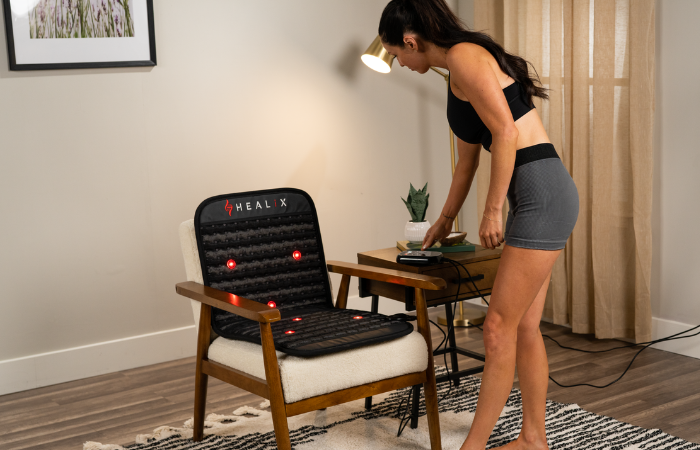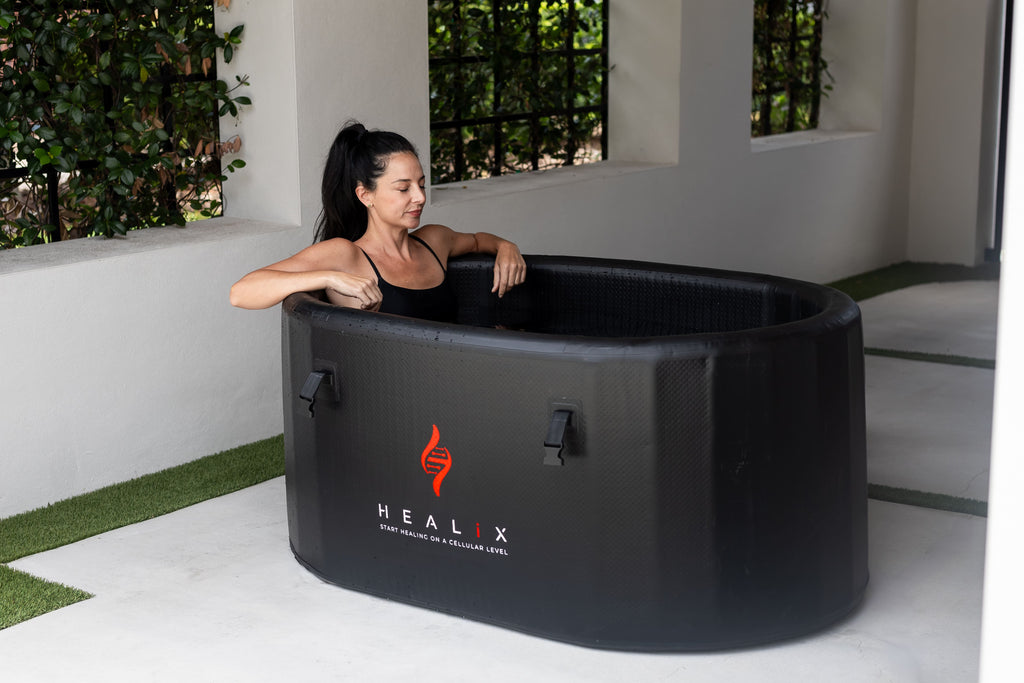Recovery, Mitochondria, and Red Light Therapy: A Deep Dive into Cellular Health and Healing
Recovery, Mitochondria, and Red Light Therapy: A Deep Dive into Cellular Health and Healing

April 8th, 2025 | Infrared Tech
Modern wellness strategies increasingly turn to innovative technologies like red light therapy (RLT) and near-infrared therapy (NIR) for enhancing cellular health and accelerating recovery. These therapies are particularly effective in improving mitochondrial function, the powerhouse of our cells, which plays a pivotal role in energy production, cellular repair, and overall health.
Understanding Mitochondria: The Energy Powerhouse
Mitochondria are responsible for producing adenosine triphosphate (ATP), the energy currency of the body. ATP fuels cellular functions such as muscle contraction, immune responses, and tissue repair. However, factors like oxidative stress, aging, or intense physical activity can impair mitochondrial efficiency, leading to fatigue, inflammation, and slower recovery.
Red light therapy and near-infrared therapy have emerged as non-invasive solutions to counteract these challenges. They work by delivering specific wavelengths of light—typically in the 600–1000 nm range—that penetrate deep into tissues to stimulate mitochondrial activity.
Research shared on PubMed supports this mechanism, showing that red light enhances mitochondrial function by interacting with cytochrome c oxidase to boost ATP production and reduce oxidative stress.
To explore how red light therapy addresses oxidative stress and promotes cellular health, check out the HEALiX blog article on Red Light Therapy and Oxidative Stress: A Natural Solution for Wellness.

How Red Light Therapy Enhances Mitochondrial Function
Red light therapy supports mitochondria in several ways:
1. Boosting ATP Production
The photons from red and near-infrared light are absorbed by cytochrome c oxidase, a key enzyme in the electron transport chain. This absorption enhances ATP synthesis, providing cells with more energy to repair and regenerate.
2. Promoting Mitochondrial Biogenesis
RLT stimulates the production of new mitochondria through mitochondrial biogenesis. This ensures a steady supply of ATP while improving cellular energy metabolism.
3. Reducing Oxidative Stress
Mitochondria are vulnerable to oxidative stress caused by free radicals. Red light therapy mitigates this by increasing antioxidant enzyme activity and reducing reactive oxygen species (ROS), thereby protecting mitochondrial DNA and proteins.
4. Improving Cellular Respiration
RLT enhances oxidative phosphorylation—the process by which cells use oxygen to generate energy—making mitochondria more efficient at meeting cellular demands.
For further insights into mitochondrial health benefits through photobiomodulation, explore Managing Tendonitis in Athletes through Infrared Red Light Therapy.
Recovery Benefits of Red Light Therapy
The ability of red light therapy to optimize mitochondrial function translates into significant recovery benefits:
1. Accelerated Muscle Recovery
RLT improves blood flow and oxygen delivery to muscles, aiding in faster repair of microtears caused by exercise. It also reduces inflammation and pain, enabling quicker recovery after intense physical activity.
2. Enhanced Healing
By stimulating ATP production and collagen synthesis, red light therapy accelerates wound healing while reducing scarring and inflammation. This makes it a valuable tool for post-surgery recovery or injury rehabilitation.
3. Reduced Inflammation
Both red light and near-infrared light penetrate deep into tissues to combat inflammation at the cellular level. This anti-inflammatory effect is crucial for reducing muscle soreness and promoting long-term recovery.
4. Improved Endurance and Performance
Athletes benefit from increased mitochondrial efficiency through enhanced stamina, reduced muscle fatigue, and better overall physical performance.
For more details on athletic recovery benefits, check out Post-Workout Recovery: Accelerating Healing with Infrared Therapy.
Near-Infrared Therapy: Complementary Benefits
Near-infrared therapy (NIR) shares many benefits with red light therapy but offers deeper tissue penetration due to its longer wavelengths. Key advantages include:
1. Enhanced Vasodilation: NIR increases nitric oxide levels in the blood vessels, improving circulation and nutrient delivery to damaged tissues.
2. Neuroprotection: Studies show NIR can rescue mitochondrial dysfunction in neurons affected by oxygen-glucose deprivation, highlighting its potential in brain injury recovery.
3. Anti-Aging Effects: NIR mitigates age-related mitochondrial decline by boosting cellular respiration and reducing inflammation associated with aging.
To learn more about how infrared therapies support deeper healing processes, read Top 10 Benefits of Infrared Sauna Blankets.
Scientific Evidence Supporting Light Therapies
Numerous studies built around real world function validate the efficacy of red light and near-infrared therapies:
1. A study published in Nature highlighted that NIR/red light therapy improves mitochondrial function associated with aging while reducing ROS generation.
2.Research on muscle cells revealed that mixed red and NIR wavelengths significantly increased ATP synthesis over prolonged periods, suggesting cumulative benefits for muscle recovery.
3. NASA's early experiments found that RLT accelerated wound healing in astronauts by enhancing cellular energy production—a finding supported by subsequent clinical trials.
Practical Applications for Recovery
Incorporating red light therapy into recovery routines is straightforward. Devices like the HEALiX Glow Light Pod utilize advanced technology to deliver targeted wavelengths for full-body rejuvenation. While not directly promoting specific products here, users can explore similar devices offering safe clinical-grade capabilities.
Conclusion
Red light therapy and near-infrared therapy represent groundbreaking approaches to enhancing mitochondrial health and accelerating recovery. By boosting ATP production, reducing oxidative stress, and improving cellular respiration, these therapies offer profound benefits for muscle repair, endurance enhancement, and overall well-being.
For those seeking deeper insights into photobiomodulation or exploring its applications further, check out related articles on HEALiX Infrared under their wellness section.
References Integrated Within Content:
Monotropein promotes angiogenesis and inhibits oxidative stress-induced autophagy
Near infrared/red light therapy as a potential countermeasure
Low-level laser therapy (LLLT) reduces oxidative stress in neurons



